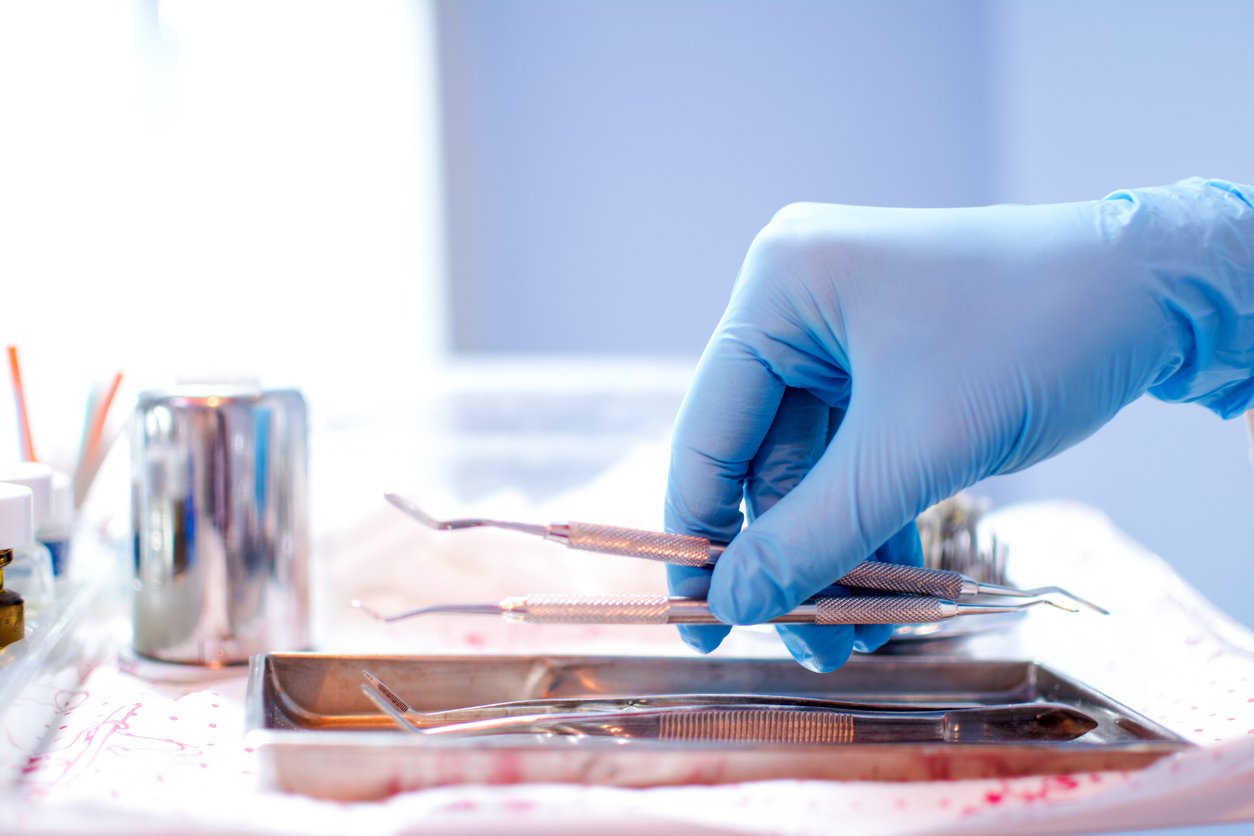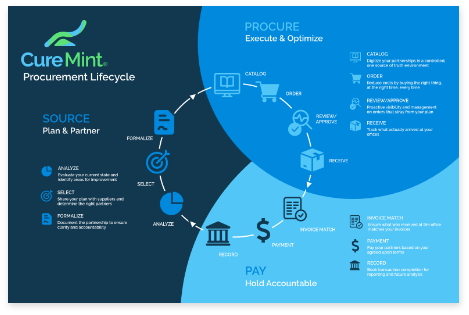It doesn’t matter whether you’re whitening teeth or selling toothbrushes – the business of running a dental practice is like any other business. Revenue comes in, costs go out, and what’s left over turns to profit. While dentists and dental staff will always be focused on delivering patient care (and rightfully so), practice owners, CEOs, and CFOs have a different goal in mind for their organization: namely, to be profitable.
So how can a dental organization increase its profits? Generally speaking, there are 3 primary ways for dental organizations to grow profits:
- Add more dentists (or chairs)
- Buy more practices
- Control existing costs
The first approach (increasing productivity) is mostly limited by hours in the day and the size of the patient pool in your market. The second approach (increasing EBITDA) is limited by the amount of debt capital available to your organization and its flexibility to expand. The third approach (decreasing costs) however, has nearly unlimited potential – the more costs you can save, the more of your revenue you can keep.
The two largest costs at a dental practice are 1) Labor and 2) Supplies. Although labor costs are relatively unavoidable – you need dentists, hygienists, assistants, office managers, and front desk assistants to operate the practice – dental supply costs can vary from practice to practice and month to month depending on a whole host of factors. So it’s no surprise that decreasing supply costs presents a golden opportunity for DSOs and group dental practices to drive bottom line growth.
This is where procurement software enters the picture. Supply costs, operational costs, opportunity costs – all of these and more are boiled into an organization’s procurement process. And in a hyper competitive environment where deals are won and lost on bottom line growth, decreasing your organization’s procurement costs can be the difference between growing profits or barely breaking even.
But cutting costs, while simple in theory, isn’t exactly a straightforward process. More specifically, there are 3 main elements of decreasing costs: reduction, control, and efficiency.
Cost Reduction at Dental Practices
Cost reduction is the process used by companies to reduce their costs and increase their profits. It is a strategy in which the organization identifies possible cost savings opportunities and sets a course of action for achieving them.
For example, a single dental office may spend $500 per year on dental burs. At a 100-office DSO, this would add up to $50,000 per year spent on burs. But what if the organization’s procurement team is able to research and negotiate a better deal on the same burs from a different supplier? Even saving as little as 30% on dental burs could mean a windfall of $15,000 for this organization – and that’s just on one single product.
Cost reduction, one of the top priorities of any procurement department, is a technique aimed at reducing the spending targets for an organization. If there is any possibility in bringing about savings in cost incurred – whether it’s material, labor, overhead, etc – then cost reduction seeks to find that gap and create a plan for delivering the lowered costs.
While cost reduction is a great idea in theory, it may be difficult to implement for dental organizations that still rely on paper processing and reporting that comes from their vendors. Cost reduction begins with monitoring your own purchasing data using reporting and analytics on things like order volume, purchase history, and a detailed breakdown of spend by vendor, product, office, and other factors. From there, you can begin to build an effective cost reduction strategy that gives you greater negotiating leverage with manufacturers and suppliers to reduce dental supply costs for your organization.
Cost Control at Dental Practices
Once a cost reduction plan is in effect, the next part is controlling the costs that are leaving your organization. In other words, if cost reduction is the strategy around lowering supply costs, then cost control is the execution part of lowering the actual costs to the predetermined targets.
Cost control can be thought of as “keeping costs under budget all the time.” For example, if the goal is to spend 5% of revenue on supplies each month, then cost control is driving costs down to 5% and hitting that mark consistently. At this point, the organization doesn’t care so much about saving money with a certain vendor (cost reduction), they are more focused on realizing the value that they worked so hard to negotiate for.
Once again, this is a procurement platform’s time to shine. With formularies and budgets for each dental office and a standardized process for approving dental supply purchases across the organization, an all-in-one procurement solution prevents overspending on the wrong products that can derail even the best cost reduction plan. And the savings don’t stop with purchasing – a comprehensive procure-to-pay platform like CureMint can effortlessly cut down on mispayments thanks to automated invoice matching that flags duplicate or erroneous invoices.
Cost Efficiency at Dental Practices
If cost reduction is identifying new savings targets and cost control is getting to them consistently, then cost efficiency is the steps it takes to get there. At most dental practices, saving on dental supplies revolves around formulary compliance and budgeting – getting the right products at the right price, month in and month out. But if these are manual processes that rely on paper processing and human inputs, then it’s likely that the savings to be gained from lower supply costs are going straight to the labor overhead that is being spent on earning them. And what good are cost control measures if they end up outweighing any of the benefits to be gained?
In this case, procurement software can help by automating the steps necessary to get to the ultimate savings floor for your organization. For budgets, this means providing custom budgets and dashboards that automatically track office spending without lifting a finger. For purchasing, automated order rules notify procurement managers of high-risk purchase requests in seconds. And on the payment side, A/P teams no longer have to spend hours of their time on routine invoice processing.
As you can see, gaining cost efficiency requires a solution that removes department silos and brings visibility to each step of the procure-to-pay journey. Only then can you build an efficient dental procurement operation that consistently delivers savings to your bottom line.
A Holistic Approach to Cutting Dental Costs
Saving on dental supplies for your dental organization starts with forming a solid cost reduction strategy, but if you don’t have the proper control and efficiency in place, you won’t be able to accomplish much at the end of the day. In order to truly drive down costs, you need all of the elements – cost reduction, cost control, and cost efficiency – to work in combination with each other. Understanding how to pull the right levers for each of these functions will help steer your dental organization toward continued success for years to come.
Interested in learning more about how CureMint helps dental practices with cost control, reduction, and efficiency? Sign up today for a free demo.
Related Blogs
Dental Procurement vs. Dental Supply Purchasing: What’s the Difference?
11.02.21
As dental practice owners and office managers look into their…
The 4 Accounting Codes You Need to Know for Dental Spend Management
10.28.21
Accounting codes have mystified many dental teams throughout…
How to Get Started with Dental Spend Management When You Don’t Know Where to Start
09.30.21
For rapidly growing dental service organizations (DSOs), the…





